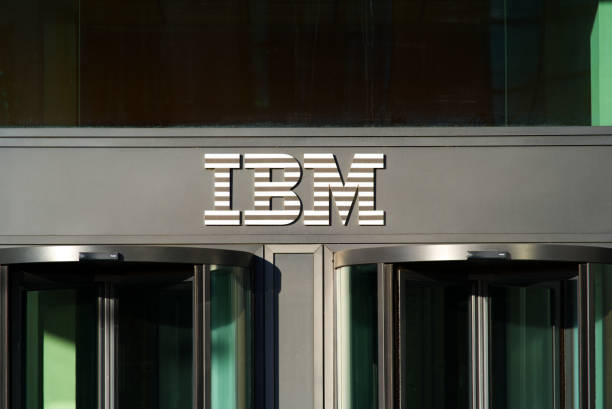Could Snowflake Stock Help You Become a Millionaire?


Snowflake's (NYSE: SNOW) stock soared 33% on Nov. 21 after the cloud-based data warehouse provider posted its latest earnings report. For the third quarter of fiscal 2025, which ended on Oct. 31, its revenue rose 28% year over year to $942.1 million and exceeded analysts' expectations by $43.6 million. Its adjusted net income declined 19% to $73.2 million, or $0.20, but cleared the consensus forecast by a nickel.
For the full year, Snowflake expects its product revenue (which accounts for most of its top line) to rise 29%. That's higher than its previous outlook for 26% growth, but it would still represent its slowest annual growth rate since its initial public offering (IPO) in 2020.

Image source: Getty Images.
Snowflake's beat-and-raise quarter brought back some bulls, but its stock remains nearly 60% below its all-time high. So could its latest earnings report mark the beginning of a new millionaire-making rally?
Snowflake's business is maturing
Snowflake's cloud-based data warehouses help large companies gather all of their data into a centralized location so it can be easily accessed by third-party applications. That approach breaks down the silos between different computing platforms and makes it easier for companies to make data-driven decisions.
Snowflake's service runs on top of Amazon Web Services (AWS), Microsoft Azure, and other cloud infrastructure platforms. It also offers flexible consumption-based plans, which only charge customers for the storage and computing power they need, instead of locking them into subscriptions.
Amazon and Microsoft also offer their own integrated cloud-based data warehouses, but Snowflake's cross-compatibility with a wide range of cloud infrastructure platforms and flexible pricing model makes it an appealing option for companies that don't want to be locked into a single big tech company's ecosystem. That's why its annual product revenue more than doubled in both fiscal 2021 and fiscal 2022 (which ended in January 2022).
Its product revenue rose 70% in fiscal 2023, but cooled to just 38% growth in fiscal 2024. Its net revenue retention rate, which gauges its year-over-year growth per existing customer, dropped from 168% in fiscal 2021 to 131% in fiscal 2024. Those two core growth metrics continued to cool off in fiscal 2025.
Metric | Q3 2024 | Q4 2024 | Q1 2025 | Q2 2025 | Q3 2025 |
|---|---|---|---|---|---|
Product revenue growth (YOY) | 34% | 33% | 34% | 30% | 29% |
Net revenue retention rate | 135% | 131% | 128% | 127% | 127% |
Data source: Snowflake. YOY = Year over year.
Snowflake, like many other cloud software companies, mainly blamed its slowdown on the macro headwinds. However, it also faces stiff competition from faster-growing data warehousing start-ups like Databricks, as well as cloud giants like Amazon and Microsoft.
On the bright side, Snowflake's net revenue retention rate stabilized sequentially in the third quarter as some of its older customers started to use its newer products. The rapid expansion of the AI market is also generating tailwinds for its Cortex AI platform, which helps companies quickly crunch data and build their own generative AI applications. Those fresh product initiatives prompted it to boost its full-year product revenue guidance.
But its margins are stabilizing
Snowflake's adjusted product, operating, and free-cash-flow (FCF) margins also slipped as its top-line growth cooled off. But in the third quarter, all three of those metrics either remained stable or expanded sequentially.
Metric | Q3 2024 | Q4 2024 | Q1 2025 | Q2 2025 | Q3 2025 |
|---|---|---|---|---|---|
Adjusted product gross margin | 78% | 78% | 77% | 76% | 76% |
Adjusted operating margin | 10% | 9% | 4% | 5% | 6% |
Adjusted FCF margin | 15% | 42% | 44% | 8% | 9% |
Data source: Snowflake.
During the conference call, CEO Sridhar Ramaswamy attributed that stabilization to its "more rigorous approach to cost management," the removal of "redundant management layers," and the use of "AI to drive higher velocity while reducing overall costs."
For the full year, it's guiding for an adjusted product gross margin of 76%, an adjusted operating margin of 5%, and an adjusted FCF margin of 26%. All three margins would represent declines from fiscal 2024, but they could stabilize at its current levels.
Could Snowflake be a millionaire-maker stock?
Snowflake is growing, but its business is maturing and it's still deeply unprofitable on a generally accepted accounting principles (GAAP) basis. Its stock isn't a screaming bargain at 12 times this year's sales, but it's still plowing a lot of cash into buybacks to offset the dilution from its stock-based compensation.
That might be why Warren Buffett's Berkshire Hathaway liquidated its entire stake in Snowflake this year, and why its insiders sold nearly 4 times as many shares as they bought over the past 12 months.
Analysts expect Snowflake's revenue to grow at a compound annual growth rate (CAGR) of 24% from fiscal 2024 to fiscal 2027. Assuming it meets those expectations, keeps growing at a CAGR of 20% over the following 13 years, and trades at about 10 times sales, its market cap could potentially grow 1,240% to $580 billion by fiscal 2040.
That rally would turn $75,000 into over $1 million -- but it's too early to tell if it can maintain its momentum in the increasingly crowded data warehousing market. So while Snowflake's stock might eventually make you a millionaire, hitting that goal could require a lot of patience.







